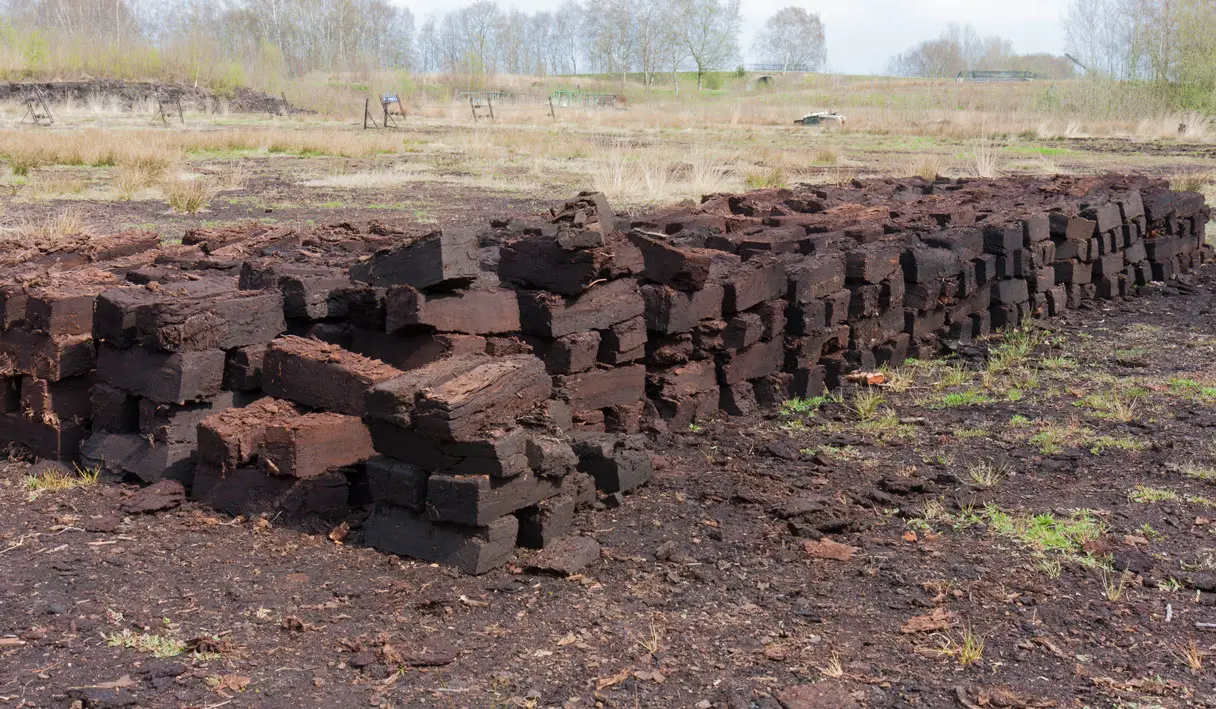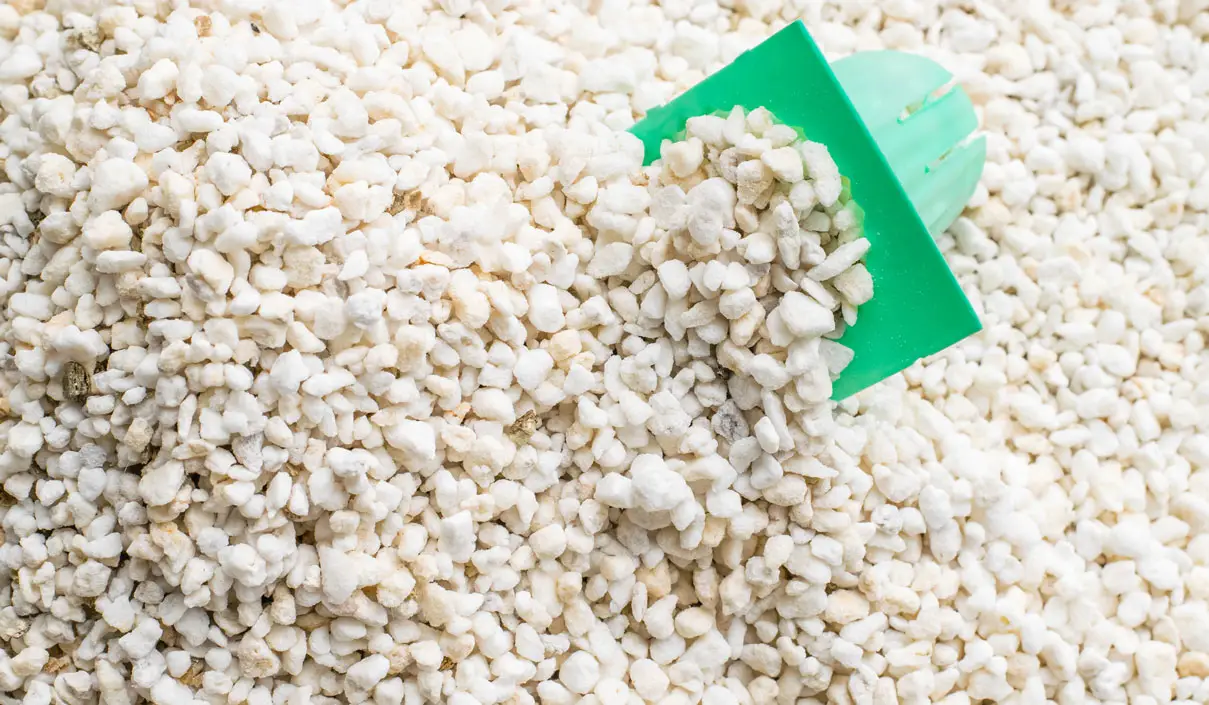9 Cheapest Alternatives to Hydroponic Rockwool

This post follows our research editorial guidelines.

Rockwool is a common substrate for even the most casual of home growers, but it comes at an environmental cost. Labor intensive to make and unable to be recycled, each rockwool mat or plug will spend millennia in landfill. How can we replace rockwool in a way that’s both eco friendly and affordable? If these cheap alternatives don’t work for you check out our full growing medium guide for other hydroponic options.

Table of Contents
What’s Rockwool made from?
Rockwool is made from the volcanic stone and other additives that is super-heated until it melts. Once liquid, the material is spun to produce delicate fibers. Once collected together the fibers resemble wool, hence the name.
Because its made of stone, it’s biologically inert. It’s a great property for a hydroponics media, but it means that once they have run their lifespan, they join the millions of tonnes of rockwool produced by the building industry in landfill. There’s also evidence to suggest that even when new the fibers themselves are a hazard, with emerging data from the European Union linking rockwool to respiratory cancers.
How to start hydroponic seeds without rockwool?
Rockwool is often the first port of call for seed starting, but it really doesn’t have to be.
Any material with a sufficiently high water holding capacity can be used to start seeds. Coco coir is a great option as a seed starter, and it’s cheap and widely available. It’s also commonly available in plug form, ready to be used in hydro setups.
Sponge is another popular choice. Unsurprisingly, sponges hold water very well, and provide solid aeration for emerging roots.
What is the best growing medium for hydroponics?
The best medium for your hydroponics set up depends entirely on what you are growing and the nature of your setup. A basic Deep Water Culture setup isn’t going to have the same requirements as a drip filter system, for example.
It may also be best to blend a medium to suit your specific needs. Coir, vermiculite and perlite mix together in equal parts form a lusciously chunky and rich growing medium that’s particularly good for sprouting seeds. Sand and gravel mixes provide great structure for systems that rely on flowing liquids. It can be rewarding to play around for yourself .
“In traditional gardening a plant is grown in soil. The soil provides nutrients and a firm structure for the root system to grab hold. In hydroponic gardening, plants still require some form of media to establish root growth although they do not derive nutrients from this media.”
John E. Gallagher, Master Gardener at Pennsylvania State University
1. Coco Coir
Coconut coir is made from fibers that grow around coconuts. It’s a byproduct of the coconut industry – it’s effectively agricultural waste being put to good use, so it’s cheap and eco friendly. It can be found in a number of different textures from coco chip, to coir mat and coco peat, so there’s an option that’s going to suit your setup and your budget. It’s one of the best alternatives for rockwool, working well as a seed starter and in netted systems. It does break down over time, however, releasing nutrients into your solution, and it can’t be reused.
2. Peat Moss

Peat moss is made of slow growing mosses harvested from bogs. It has excellent water retention properties, and helps maintain good pH. It’s biodegradable, too.
On the downside, peat is often not sustainably harvested, causing irreparable damage to the bogs in which they grow. The harvest also released an alarming amount of greenhouse gas, so if you can avoid using peat its best to do so. Learn more about the issues I have with peat moss here.
3. Rice Husks
Rice husks are an excellent choice for a cheap alternative to rockwool. Like coco coir, it’s a by product of food production, in this case rice. Putting the husks to use keeps them out of landfills, so it’s a sustainable choice all round.
Rice husks are an effective substrate for growing in a variety of systems, faring as well as other organic options. They break down somewhat more slowly over time. This releases extra nutrients for your plants, and helps maintain good pH. It’s a great choice for both the budget minded and environmentally conscious grower alike.
4. Sawdust
Sawdust is made from shavings of timber, usually pine, and is a byproduct of the lumber industry. It’s cheaply sold as pet betting, but if you’re lucky enough to live near a sawmill, you might even be able to get it for free, which is about as cheap as it gets.
Despite the low cost, it’s effective at growing good quality crops. It’s not as absorbent as coir or peat, but it does last longer and break down less readily. Just be sure that you’re using shavings from pines or other low toxin timbers – some are hazardous to plants.
5. Sand
Sand doesn’t need any introduction – if you’ve been to the beach or had a sandpit as a child, you’ll know how sand behaves. It’s cheap and easy to find, and is also totally inert – it won’t mess with your pH or nutrient load, and it doesn’t break down over time. That said, it’s heavy when dry and worse when wet, and provides poor aeration around roots. It’s also a pain to clean and sterilize.
6. Rocks or gravel
Like sand, rocks and gravel provide more structure than anything else. They are also generally inert. They don’t shed fiber or dust and will just keep on rocking, so to speak, for as long as you need them. They’re one of the easier inorganic materials to sterilize and is re-usuable for as long as you need it. Like sand, however, it’s heavy to work with and provides poor aeration.
7. Perlite

Perlite, like rockwool, is made from treated volcanic stone. This time it’s been heat treated to puff up into fluffy little clumps, like popcorn. Perlite is a versatile medium, with great aeration and water retention and it works especially well in bucket and basket systems. It’s pH neutral, sterile, and is inert.
It does have its drawbacks. It can’t be re-used, and it does tend to be a pain to work with at times. It’s light enough to blow around workshops or flow around in your system from time to time.
8. Vermiculite
Vermiculite is a form of mica, super-heated till it flakes apart like puff pastry. It’s one of the best mediums you can use for water retention, capable of both holding onto water and providing aeration and structure at the same time. As a mineral, it is enduring and doesn’t break down at all. However it can be a big pricey for large setups, and can sometimes hold onto water too well, causing root rot or poor yield when used alone.
9. Clay Pebbles
Clay pebbles, sometimes called hydroton or leca, are aerated pellets made from baked clay. They’re probably the most expensive option on the list, but I’ve included them for a good reason – it’s very durable and infinitely reusable, making it the cheapest long term choice of all.
They perform much like the other inorganic components I’ve already listed. They are much lighter with than rocks, sand or gravel, and are more stable than perlite or vermiculite so they stay where they are put. They hold nutrients well, though they do dry more readily than organic material. I go into how you can use clay pebbles in your hydroponics setups here.
Clay balls are also easy to sterilize and re-use, so they will be able to grow subsequent generations of plants no fuss at all. That initial investment will pay off substantially over time as you don’t need to by new substrate each time you go to start a crop.
Final thoughts
It’s heartening to see gardeners and growers of all stripes committing to more environmentally friendly practices. We have lots of opportunities to make our practices green from the bottom up, enhancing the already substantial environmental benefits that hydroponics can bring.

